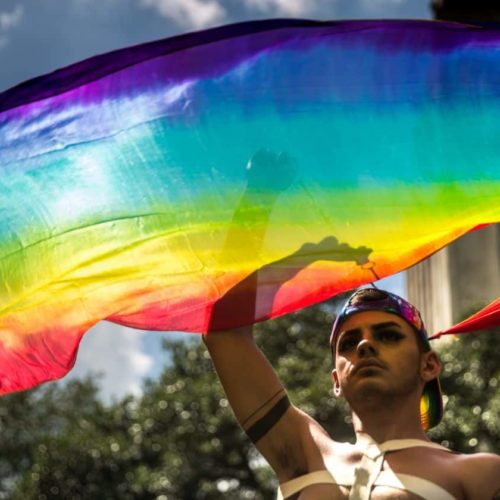
Introduction
The transition from winter to spring is a refreshing time. The longer daylight and warmer weather brings people outdoors. Inevitably, the incidence of street harassment also increases during this period. Street Harassment is when a person receives unwanted comments or gestures in a public place. These actions are often based on one’s gender, sexual orientation, race or religion. Attacking someone based on these factors reinforces societal discrimination and is extremely disrespectful. It creates a hostile situation for the victim, who has to decide whether to respond or ignore. They want to speak up against the tormentor, however fear the physical retaliation that may follow.
Fear Of The Street
Street Harassment is a phenomenon that is excessively normalized. Imagine stepping out on a beautiful spring day after a frigid winter, and someone whistles or jeers at you. Instead of speaking out, the norm is to “just ignore it” or “don’t make a scene”. The impact of street harassment isn’t its exclusive occurrence. Women facing street harassment are often followed, asked for names and numbers. People who face harassment on the street feel less comfortable travelling by themselves. They avoid sketchy areas and some take less convenient routes because they can’t deal with more name-calling. Street Harassment is a rising human rights issue since it limits a person’s ability to be in public.
Street Harassment Against The LGBTQ
The LGBTQ community faces high rates of public discrimination. Street Harassment is especially daunting for them because it creates a fear of assault and murder when they’re in public places. A study of 93,000 LGBTQ individuals conducted in the EU observed that 47% of respondents felt personally discriminated against for their sexual orientation. Almost half of the respondents avoided public places and two-thirds avoided holding hands in public. More than four-fifths of all respondents said they commonly heard casual jokes about LGBTQ community.
The LGBTQ community faces higher rates of hate-motivated violence, stemming from hypersexualized comments. In May 2019, four teenagers attacked a lesbian couple on a bus in London. The attackers demanded them to kiss and agitated them by name-calling and describing sexual positions. Moreover, when the couple refused, they assaulted them and stole their belongings. The two women needed medical treatment for a broken nose and a fractured jaw. Transgender individuals particularly face high rates of public harassment. November 28th is Transgender Day of Remembrance. On this day we honor the memory of transgender people whose lost their lives in acts of hate-crimes. Street Harassment creates a fear of places including restaurants, public transportation and parks. It discourages people from displaying their true identity.
LGBTQ Communities in Middle-Eastern & Asian Countries
In many countries around the world, there are many restrictions surrounding LGBT individuals. The cultural and religious traditions in these countries strongly influence their views on these issues. In Middle-Eastern countries, the rise in Islamic conservatism in the late 20th century made non-conforming sexual behavior condescended. Therefore, the LGBT community fears not only street harassment but public violence. In 2018, India removed Section 377, decriminalizing same-sex relations. However, the LGBT community still exists in apprehension of public harassment and bullying. In parts of Asia, LGBT community face a lot of public discrimination including stalking and blackmail. In extreme cases, victims could face the risk of police kidnapping, school expulsions or forced institutionalizations. While activists are working towards defending LGBT rights, there is currently no support from people of authority.
Conclusion
Ultimately, there are three ways to deal with street harassment. You could ignore it, deal with the harasser directly or report it. Each option has its pros and cons. However, reporting an incident can provide a sense of justice and may prevent future acts of harassment. It could also raise awareness of harassment and its impact on the community. If you are in the United States, report Street Harassment by calling 911 or a local non-emergency number. You can also received free 24/7 support, advice and information in English and Spanish by calling the toll-free National Street Harassment Hotline: 855-897-5910
April 19 – 25th is the 10th International Anti-Street Harassment Week. We at Sayfty are raising awareness on Street Harassment this entire week through the following activities and campaigns:
19 April – Launching a photo/ awareness campaign asking the following 3 questions. Submit to any one of the questions in the comments below.
If I had known it was street harassment, I would have _____
Street Harassment is _____________
I ____________ when i see someone getting harassed on the streets
April
20 – #Sayftychat (Twitter Chat) with Hollaback on “Bystander Intervention During This Pandemic”
21 – A new blog on Street Harassment on Sayfty’s Website
22 – A new blog on Sayfty’s Website
23 – Promoting the photo Campaign
24 – Webinar on Bystander intervention organized by Sayfty, Hollaback & Stop Street Harassment. Pre register here
Through these activities and campaigns we want to raise awareness about harassment, abuse and assault educate communities on how to prevent it. In order to prevent abuse, you stop the entire process from the first step. It is exactly like the social distancing that we’ve been practicing for over a month now. Social distancing helps prevent the spread of coronavirus, saving people from the grief of dealing with the illness. Street Harassment causes a lot of distress to many communities. It is important to raise awareness about this in order to prevent it. Consequently, it can also help prevent sexual assault and abuse.

About The Author
Deepa Chandrachud recently completed her Bachelor’s degree in Finance from Bentley University. She is deeply passionate about gender equality and hopes to use this platform to create more awareness about issues pertaining to women’s rights.
Some other blog posts you might like:
Image Source: PublicIntegrity
This blog is edited by Dr. Shruti Kapoor